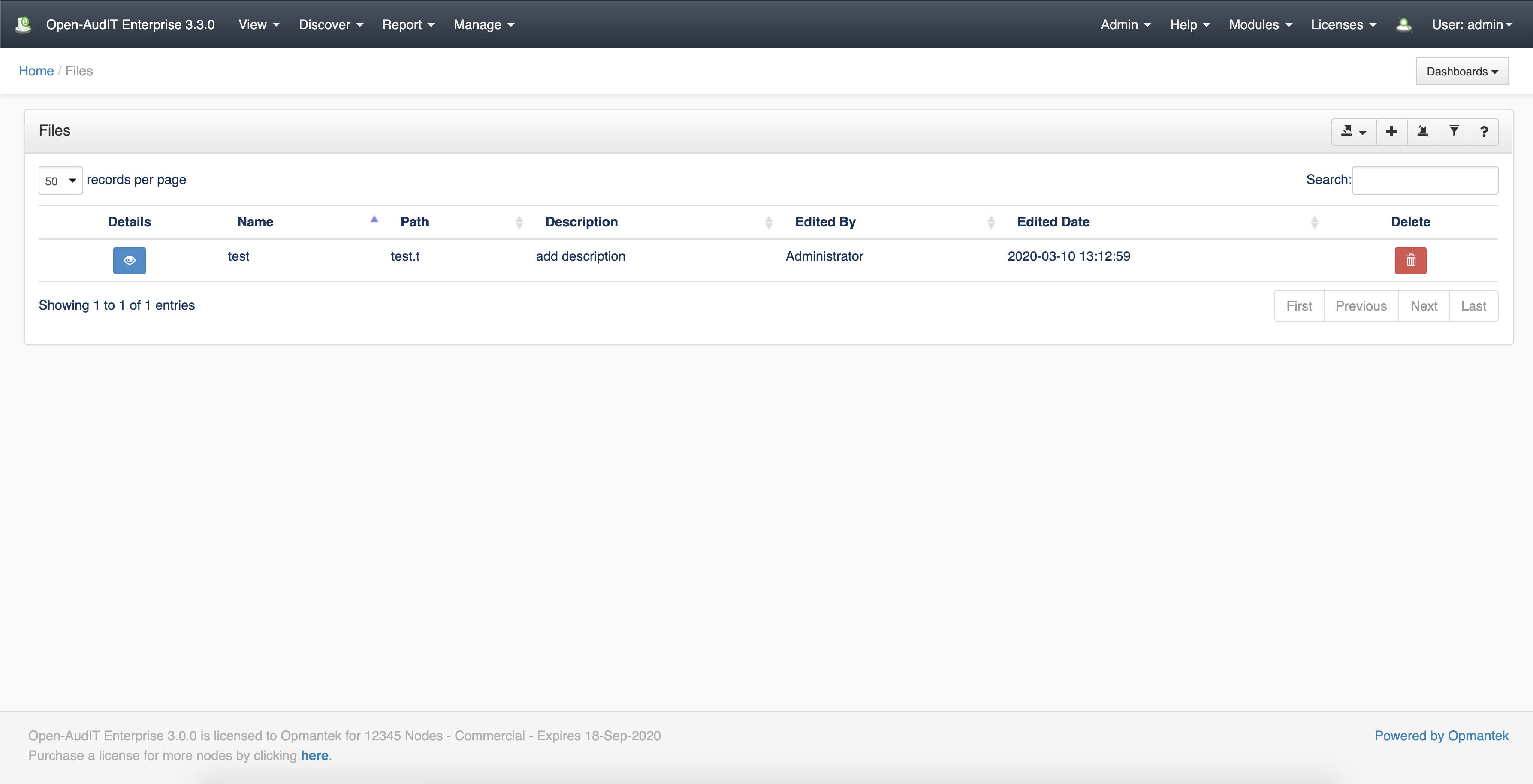...
Database Schema
The schema for the database is below. It can also be found in the application if the user has database::read permission by going to menu: Manage -> Database -> List, then clicking on the "files" table.
| Code Block | ||||
|---|---|---|---|---|
| ||||
CREATE TABLE `files` (
`id` int(10) unsigned NOT NULL AUTO_INCREMENT,
`name` varchar(200) NOT NULL DEFAULT '',
`org_id` int(10) unsigned NOT NULL DEFAULT '1',
`path` text NOT NULL,
`description` text NOT NULL,
`edited_by` varchar(200) NOT NULL DEFAULT '',
`edited_date` datetime NOT NULL DEFAULT '2000-01-01 00:00:00',
PRIMARY KEY (`id`)
) ENGINE=InnoDB DEFAULT CHARSET=utf8; |
Example Database Entry
Files are stored in the database in the "files" table. A typical entry will look as below (for a single file).
| Code Block | ||||
|---|---|---|---|---|
| ||||
id: 48
system_id: 8
current: y
first_seen: 2016-08-04 00:56:35
last_seen: 2016-08-04 00:56:35
files_id: NULL
name: single
full_name: /etc/init.d/single
size: 590
directory: /etc/init.d
hash: 27579d05edbd1b71307d2059a6c3370a00823c54
last_changed: 2014-03-13 11:33:14
meta_last_changed: 2014-08-22 17:42:38
permission: 755
owner: root
group: root
type:
version:
inode: 5374232 |
Enabling the Feature Under Windows
...
Apache will now be running under an account with network access and Open-AudIT will now be able to copy the audit script to the target Windows machine and run it, hence retrieving file details.
Database Schema
The database schema can be found in the application is the user has database::read permission by going to menu: Admin -> Database -> List Tables, then clicking on the details button for the table.
API / Web Access
...
You can access the
...
collection using the normal Open-AudIT JSON based API. Just like any other collection. Please
...
see The Open-AudIT API documentation for further
...
API Routes
...
details
...
.
...
Web Application Routes
Only available under Open-AudIT Enterprise
...
